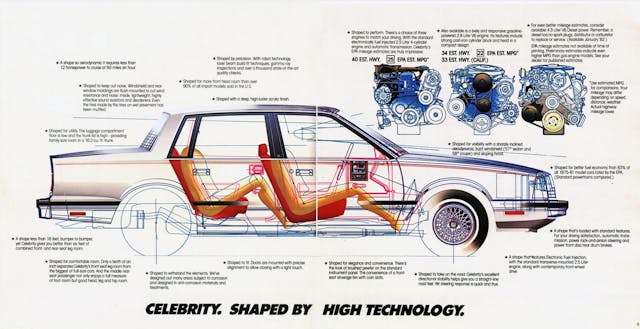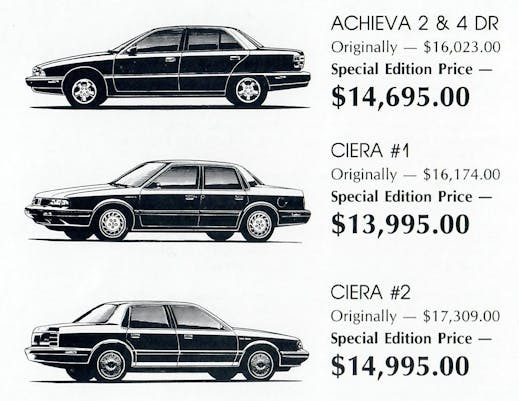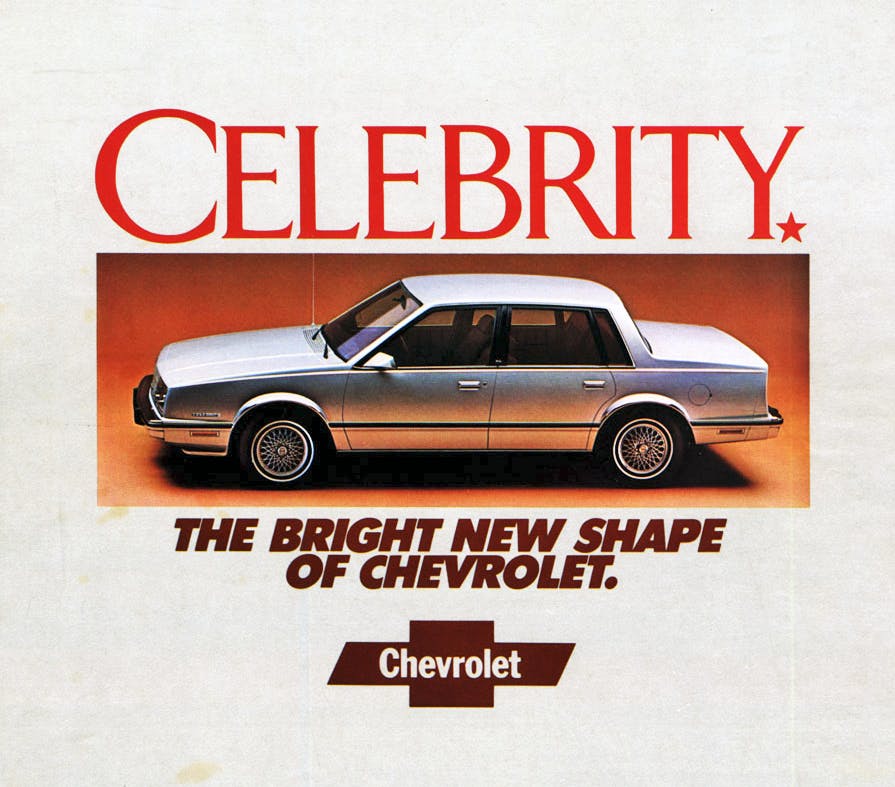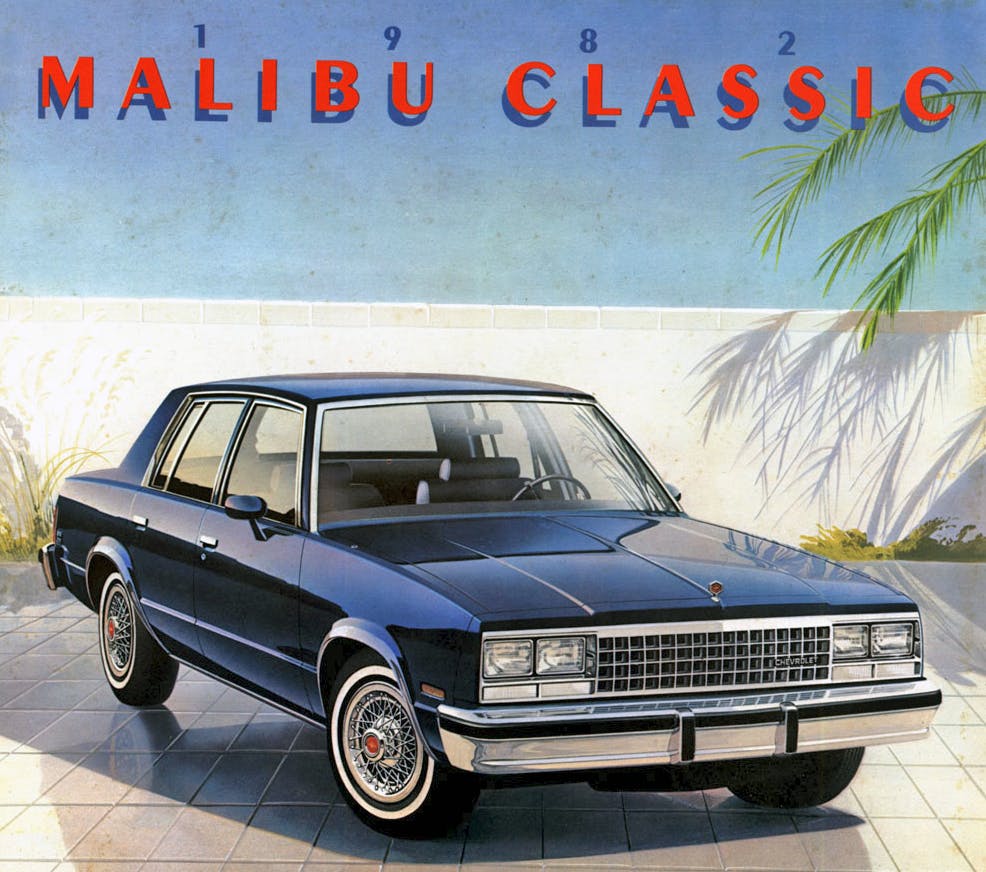The ’80s, or: Back when Celebrities were not cause for celebration
The early 1980s were no walk in the park for American automakers, even for those that had not declared bankruptcy in 1979. The forces that caused Chrysler to briefly go under weren’t unique to that company: increasingly worrisome foreign competition, R&D budgets stressed to lower emissions and improve safety, and an ever-present need to improve fuel economy via smaller cars with smaller engines. While the last was clearly needed after the onslaught of OPEC’s oil embargo in 1972, fuel economy was not always top of mind for customers.
Take, for example, the events in 1979 that threatened serious ramifications for gas prices but turned out to be less of a problem than we had feared. Unfortunately, automakers don’t have crystal balls, and turning their respective ships to make the vehicles demanded by the market takes a lot of time. Gas prices may fluctuate at speeds Wall Street can appreciate; supply chains are long and product development takes years.
This is the environment, however misinformed, that influenced Detroit to focus on downsizing operations, right-sizing its vehicles, and front-wheel-driving famous model names in its portfolios. Take Chevrolet’s mid-size lineup from 1982 to ’83: There were two platforms, one a brand new front-wheel drive (FWD) design, the other a rear-wheel-drive (RWD) platform downsized just a few years ago. Timing is everything, but time wasn’t on Chevy’s side: In GM’s alphabet soup of naming designations, both FWD and RWD mid-sizers were called “A-bodies.”

Since the FWD A-body was new, Chevy gave it a new name: Celebrity. This yet-to-be-famous Celebrity had the latest technology derived from GM’s X-body and even computer-assisted design to ensure it would perform better than the competition, which generally lacked General Motors’ impressive R&D budget. The Celebrity boasted new engines, aerodynamic designs, and advancements in NVH engineering—in short, a lot of money was on the line.
The RWD A-body was the polar opposite, tracing its roots to decades of successful, famous, and ultimately desirable vehicles from GM’s past. Chevrolet gave it an appropriately vintage name: What was once a Malibu became a Malibu Classic. (Oldsmobile did the same via Cutlass to Cutlass Supreme, Pontiac went from Lemans to Bonneville G, and Buick turned the Century into a Regal.) But most of the A-body DNA that traditionalists adore was filtered out by Malaise Era engineering upgrades, including anemic V-6 engines and side windows that rear-seat occupants couldn’t roll down. No matter, guess which one still had a lot of pull, thanks to gas prices that did the opposite of what we were anticipating?

This photo from the 1982 Chevy Malibu Classic’s sales brochure says it all. Why have front wrong-wheel drive and a unitized body when rear-wheel drive and a ladder-type frame work better in many North American zip codes? Clearly, the GM brotherhood was failing, as there was too much competition within Chevrolet. What was needed was a unified force to fight external threats.

But wait, the situation gets worse. Not only was the Celebrity fighting the Malibu Classic, but it also had an infighting problem. With one deliciously tragic photo, this Fortune magazine cover proved the similarities between the Celebrity and its sister ships from Pontiac (6000), Oldsmobile (Cutlass Ciera), and Buick (Century). While the A-body attributes were worthy of individual consideration, the disastrous change of guard at General Motors’ design studio made it much harder to cross-shop GM brands on anything but price.
That’s not to say the Celebrity (and all of GM’s new A-bodies) weren’t well-designed vehicles. I remember our family renting a Celebrity in the mid-1980s, and we liked the interior quality, ride, handling, and acceleration. That 2.8-liter Chevy was head and shoulders above the rear-wheel-drive, A-body, V-6-powered Buick Century and the Chevy Monte Carlo in our family’s garage. (Yes, the Monte is technically a G-body, I get it … don’t roast me in the comments.)
General Motors was playing damage control during this time, and its mea culpa wasn’t lost upon the fine folks at Motorweek when it drove the 1983 Chevrolet Celebrity CL coupe. In its sophomore year, the Celebrity performed well in Motorweek‘s road test, with a quiet ride and tolerable acceleration, thanks to the three-speed slushbox. However, the nervous handling and braking meant a few tweaks were still needed.
The Malibu Classic still had merit at the time, especially if dealership discounts/haggling lowered its price to a figure that belonged to the RWD A-body’s heyday. To be fair, discussing the Celebrity and Malibu Classic in some sort of A-body deathmatch some four decades later is a trite yet boring path to Middle Class Fancy commentary. I imagine something similar could be said about the Ford Edge vs. Fusion in another 40 years. Isn’t it wonderful to have 20/20 hindsight while wearing rose-colored glasses?

All non-Celebrity GM A-bodies were updated in 1989 for more passenger space and a sleeker rear window, but none could hold a candle to the W or N platforms, introduced in the ’90s, in terms of modern style. But look at the prices above: The A-body was still a convincing value proposition. Imports from Honda and Toyota were usually threats at the higher end of the market (i.e. high demand, infrequent discounting), and the Cutlass Ciera and Buick Century completed the squeeze at the other end. While the A-body of the 1990s was outdated (especially its interior design), GM still thought there was a market for the cars until 1996.
Or perhaps the powers that be at the Oklahoma City assembly plant had some leverage on the management types on GM’s Fourteenth Floor? We may never know the truth of the matter, but there’s no doubt that the FWD A-body was the best of the new GM … until it became the worst of old GM.
***
Check out the Hagerty Media homepage so you don’t miss a single story, or better yet, bookmark it. To get our best stories delivered right to your inbox, subscribe to our newsletters.





The Celebrity Eurosport wagons were darn good-looking cars in their day, and still are, in the right color – and if one can be found. The two-door sedans looked way too much like the four-door, not like a “coupe”; happily, few were built, it seemed.
Here in the Midwest, the Celebrity and their 1980’s brethren were a big boon in winter driving, compared to the Malibu. I lived and worked in a hilly city, with occasional snow and freezing rain; it was relatively rare to see a FWD car (such as a Celebrity or Cavalier) stuck, but quite frequent to see a RWD Malibu or Chevette, for example, getting a push from bystanders.